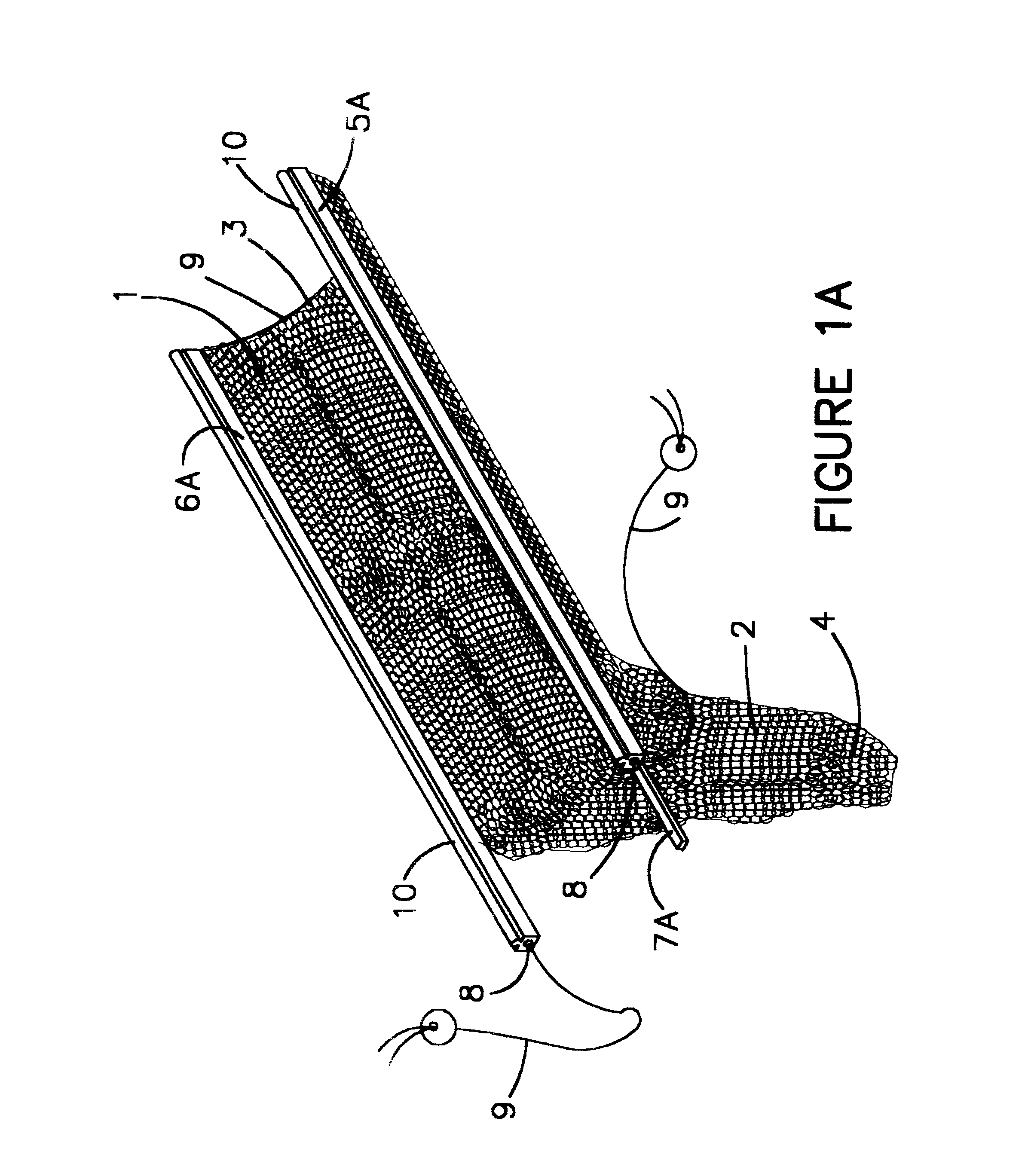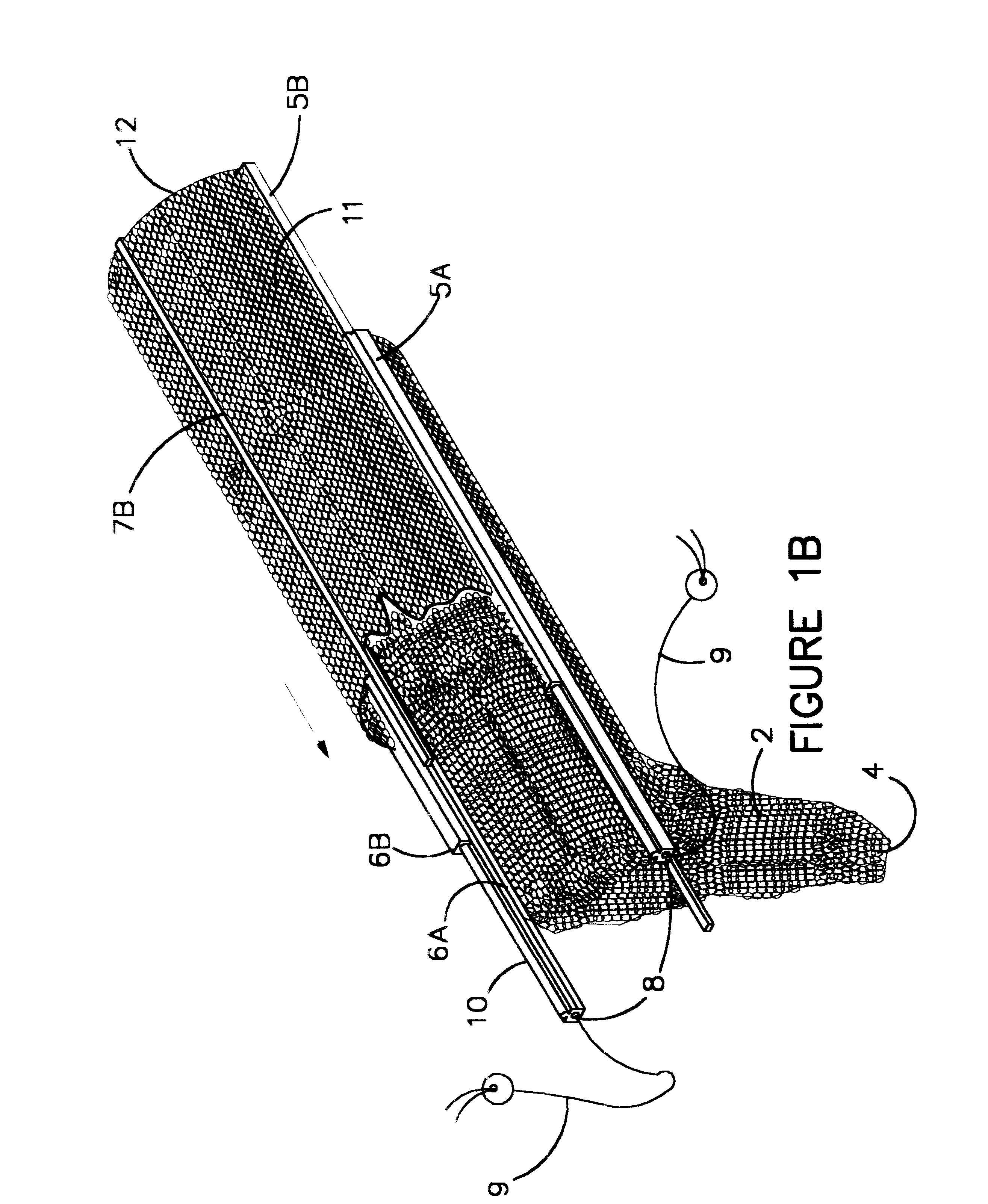Delivery assistance device
a technology of assistance device and fetus, which is applied in the field of obstetrical devices, can solve the problems of difficulty in properly placing the forceps, difficulty in locating the appropriate place on the fetus, and difficulty for the physician or other medical professional to properly place the forceps, etc., and achieves the effect of reducing or eliminating the inherent injuries, and quickly and easily removing
- Summary
- Abstract
- Description
- Claims
- Application Information
AI Technical Summary
Benefits of technology
Problems solved by technology
Method used
Image
Examples
Embodiment Construction
The invention comprises an elongated first sheet 1 of loosely knitted fibers 2, preferably polypropylene monofilament or nylon. In a most preferred embodiment, fibers 2 are knitted together in series of interlocking loops as in a jersey knit. First sheet 1 has a mouth end 3 and a control end 4 opposite mouth end 3.
First sheet 1 extends between a first pair of insertion arms 5A, 6A which run from mouth end 3 toward control end 4. First insertion arms 5A and 6A should be thin and flexible in the dimensions transverse to the longitudinal dimension of first insertion arms 5A, 6A. However, first insertion arms 5A and 6A should be relatively stiff and strong in the dimension parallel to their longitudinal dimension. Preferably, first insertion arms 5A and 6A should be made of polystyrene.
A first central insertion arm 7A is positioned on first sheet 1 between first insertions arms 5A and 6A and also extends from mouth end 3 toward control end 4. Like first insertion arms 5A and 6A, first c...
PUM
 Login to View More
Login to View More Abstract
Description
Claims
Application Information
 Login to View More
Login to View More - R&D
- Intellectual Property
- Life Sciences
- Materials
- Tech Scout
- Unparalleled Data Quality
- Higher Quality Content
- 60% Fewer Hallucinations
Browse by: Latest US Patents, China's latest patents, Technical Efficacy Thesaurus, Application Domain, Technology Topic, Popular Technical Reports.
© 2025 PatSnap. All rights reserved.Legal|Privacy policy|Modern Slavery Act Transparency Statement|Sitemap|About US| Contact US: help@patsnap.com



